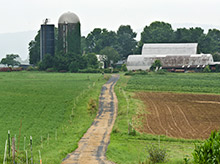Coexistence is critical to U.S. agriculture-biotech, organic and non-GE farmers are all vitally important to U.S. agriculture-they all have to thrive. We see a key role for each of these sectors in meeting our global and domestic food needs, increasing sustainability, and enhancing farm profitability and economic development. All three segments are vital, important, and a part of rural America's success. All three sectors should be able to thrive together.
Over the last two decades, there has been rapid adoption by farmers of new technologies, like biotechnology. Biotechnology holds great promise for agriculture here in the United States, and around the world. USDA's regulatory system has done a very good job of safely bringing genetically engineered (GE) agricultural products to market.
There has also been strong growth in the organic sector and in identity preserved markets. These identity preserved markets include meeting requirements of trading partners who don't accept GE products and the organic market. It also encompasses other products with particular, non-GE, but not organic, characteristics.
The rise and growth of all these sectors is great for U.S. agriculture. It means farmers have a range of ways to meet consumer needs and preferences both here and around the world. It means they can grow their operations and contribute to the success and vitality of rural America.
But it also presents challenges. The developers and users of GE products want the ability to use the technology to help us feed our country and the world. And the organic and identity preserved sectors are sensitive to the unintended presence of GE material in those product streams.
Coexistence is an important challenge facing U.S. agriculture today. Farmers and others in the food and feed production chain have an important role in collaborating to make coexistence work. USDA is working to increase awareness of the need for coexistence, as well as information on practices that can help support it. USDA is also working to help different sectors of agriculture exchange information, build coalitions, and make decisions that contribute to or directly support coexistence.

